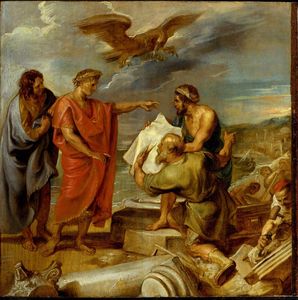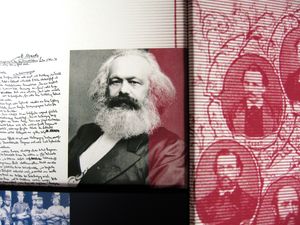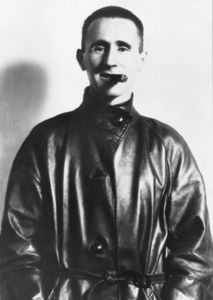Follow in the footsteps of celebrities in the HISTORIC HIGHLIGHTS OF GERMANY
Leimen, Trier (pts014/26.03.2007/10:30) Travelers to Germany can follow in the footsteps of famous figures in history at the special exhibition on Roman Emperor Constantine the Great and at the birthplace of socialist Karl Marx in Trier; the medieval Augustinian monastery in Erfurt, where the young Martin Luther lived before the German Reformation; Buddenbrooks House, the family home and setting for Thomas Mann's great novel, Buddenbrooks, and the Günter Grass House, honoring Germany's greatest living writer, in Lübeck by visiting the cities of Historic Highlights of Germany, a group of 13 charming cities, steeped in culture and history. Their web site is http://www.historicgermany.com.
In Trier, founded by the Romans in 16 BC and Germany's oldest city, a major exhibition on Roman Emperor Constantine the Great runs from June 2 to November 4 in the Rhine State Museum, the Bishopric Cathedral and Diocese Museum and the Simeonstift City Museum, focusing on this master of the Roman Empire, first Christian emperor and on traditions and myths of his legacy. Highlights include the head of a colossal statue of the emperor, original frescoes depicting his family and scale models of Christian churches he built. Trier, Constantine's first imperial residence and capital of his empire from 307 to 324 AD, retains splendid Roman monuments such as the well-preserved 2nd-century Porta Nigra (Black Gate), his throne room, the Amphitheater and Imperial Baths.
The Karl Marx House in Trier, where the founder of Communism was born in 1818 and lived until 1835, is a showcase of his life and 19th-century socialism through letters, photographs, his love poetry and a large collection of editions of Das Kapital and The Communist Manifesto. The city is a good base for exploring the winding Mosel Valley with its wine villages and vineyards, many planted by the Romans more than 2,000 years ago.
The reunification of Germany made it easier for tourists to follow the Martin Luther Trail to Erfurt, the capital of Thuringia and part of former East Germany, where the young man came in 1501 to study law at the university, switched to theology and was ordained a priest at St. Mary's Cathedral. The Augustinian monastery where he was a monk from 1505 to 1511 contains an exhibition on "Bible-Monastery-Luther" in the former monks' quarters, his cell, a library and lodging in sparely furnished rooms with private shower and toilet but no telephone, TV or radio. An excursion can be made to Wartburg Cas-tle, where Luther translated the New Testament into German.
Lübeck, the Hanseatic city on the Baltic Sea, honors giants of 20th-century literature Günter Grass and Thomas Mann, winners of the Nobel prize in 1999 and 1929, and the writer Heinrich Mann, brother of Thomas. The 18th-century gabled Buddenbrooks House of Mann's grandparents was the setting for Buddenbrooks, his famous novel about the decline of a wealthy Lübeck merchant family. Photographs and exhibitions at six biographical stations give an intimate view of the Mann family and the patrician lifestyle.
Opened in 2002, the Günter Grass House is "a crossroads forum about where literature and the visual arts meet" and explores Grass's "double gifts" of talent in literature, sculpture, graphics and music. Exhibits on the author of The Tin Drum include the writing process, with bold corrections, from hand-written manuscript to Olivetti typewriter to computer as well as his sculptures in a courtyard garden.
Other sites related to outstanding historical figures are the birthplace of playwright Bertolt Brecht, best known for the Threepenny Opera, in Augsburg; the Pablo Picasso Graphics Museum with more than 800 lithographs in Münster; the Kepler Memorial House, where the great astronomer died in 1630, in Regensburg; and Haus von Walfisch (House of the Whale) in Freiburg, where the humanist Erasmus of Rotterdam lived for two years during the Protestant Reformation.
The Historic Highlights of Germany consists of the cities of Augsburg, Erfurt, Freiburg, Heidelberg, Koblenz, Lübeck, Münster, Potsdam, Regensburg, Rostock, Trier, Wiesbaden and Würzburg. Each city has a unique character and profile; all have a rich historic and cultural heritage. Additional information and city links can be found on their web site, http://www.historicgermany.com
If you have any questions regarding information in this press releases or in press trips please contact:
Historic Highlights of Germany e.V.
Björn Rudek
Communication
c/o Tourist Information Trier
An der Porta Nigra
54290 Trier/ Germany
Tel.: +49 - (0)6 51 - 97 808 28
Fax: +49 - (0)6 51 - 97 808 88
E-mail: bjoern.rudek@hhog.de
Internet: http://www.historicgermany.com
| Aussender: | Historic Highlights of Germany |
| Ansprechpartner: | Björn Rudek |
| Tel.: | 0651 - 97 808 28 |
| E-Mail: | bjoern.rudek@hhog.de |







